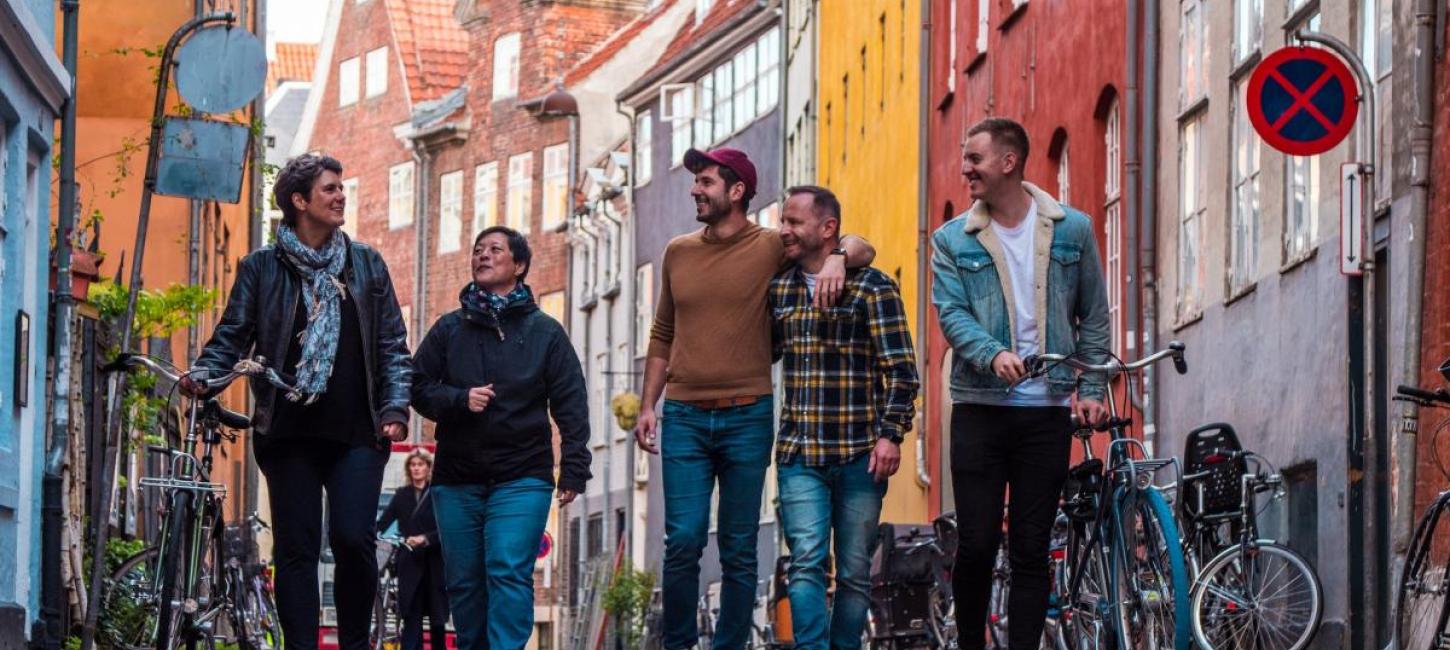
Copenhagen is the gay village of Northern Europe
For almost a century Denmark has been a LGBTI+ frontrunner and Copenhagen is often celebrated as the world’s most LGBTI+ friendly city, yet the Danish capital doesn’t offer a designated gay village – the rainbow flag flies over entire city.
By Lars Henriksen, the Chairperson of Copenhagen Pride
Around 1850 the old fortifications around the centre of Copenhagen, that had for centuries both safe-guarded the city and at the same time kept it from expanding, fell. Moats and ramparts no longer served in modern war, and over the next 30 years, most of it was demolished and opened the city towards West, North and South, creating new boom-town neighbourhoods across the bridges that had since olden times connected the Medieval City across the moat to its suburbs.
The area between the old and the new part of town is also where 150 years ago an entertainment area developed, that formed the basis of a gay community. This is where people met, bridging the gaps between classes, sexualities and gender and to this day, Ørstedsparken – part of the old fortifications, remains a sought-after cruising area during summer nights.
The bridges have given their names to the neighbourhoods: Vesterbro, Nørrebro, Østerbro – and beyond Sønderbro: Amager.
To understand and benefit from Copenhagen – understanding the lay-out is vital.
Vesterbro is the gentrified, hipster-heavy hood, with loads of young families and children – and a strong LGBTI+ population, Nørrebro is less “done up” and maintains more of the working-class vibe and a vibrant immigrant community, while Østerbro is bourgeois with its’ proximity to the water and the new Nordhavn-quarter – modern, but still integrated in the city. Amager is an island separate from Copenhagen, and you feel it, where the long winding roads take you along the coast, where new high-rises line busy beaches almost as far as the airport and the bridge that links Copenhagen to Malmö – Sweden’s second largest city.
The medieval centre of Copenhagen, however, remains the focus for the LGBTI+ scene. This is where you will find the bulk of the 20-30 LGBTI+ bars, cafés and restaurants, all of which are small, cosy and close to one another, and some of which have existed for upwards of 100 years.
You may expect that Copenhagen - being repeatedly named the most LGBTI+ friendly place on earth - consequently hosts a large number of bars and clubs, but due to the overall LGBTI+ friendliness of the city, where the gay community can go anywhere and feel welcome, the number of places that cater exclusively to our community are relatively few. But while few bars or restaurants feel it necessary to boast their inclusiveness, they are. We sometimes say, that “Copenhagen may not have an LGBTI+ village, because Copenhagen IS the gay village of Northern Europe.”
The variety of bars is wide, and the restaurant scene is spectacular; from LGBTI+ cafes and restaurants like Oscar Bar on the Rainbow Square (named in honour of the city’s LGBTI+ community) and Kronborg or 1733, to the large number of Michelin-starred restaurants or outdoor food markets. LGBTI+ tourists can feel safe and included wherever we go.
Copenhagen has also become a major wedding destination for LGBTI+ couples, as the City Hall of Copenhagen hosted the world´s first same sex union in 1989. The city does its utmost to facilitate the paperwork for couples who wish to get married in the historic Wedding Hall, through the popular www.Idocph.kk.dk initiative.
Denmark has for almost a century been a frontrunner in LGBTI+ rights, from the decriminalization of homosexuality in 1933 till today, where in 2017, Denmark was the first country in the world to remove trans people from the list of mental diagnoses. This also is manifest in the old and influential LGBTI+ organizations – LGBT+ Denmark being founded as early as 1948 and Copenhagen Pride, that annually attracts upwards to half a million participants- or half the city’s population to its’ festival week in August. For any tourist, checking the calendar for special events during your stay is encouraged – all organizations have websites in English with the latest updated events in the city.
For rainbow families, Copenhagen should be top of the list of destinations. Safe, friendly and accessible with an abundance of things to do for families with kids, nature is close to the city and the harbour a popular venue for sports and free time activities with harbour baths, playgrounds, and boat rentals to allow you to benefit from one of the most eco-aware and child-friendly cities in the world.
Days are long in summer in Copenhagen with the sun setting for merely four hours at midsummer and Copenhageners are keen on the out-doors – at the faintest ray of sun, they are out walking, jogging, biking or simply lounging in one of the many green areas in and around the city. To really get the Copenhagen feeling, make sure you go to the beach or swim in the harbour. There are even a couple of nude beaches in and close to the city. Sex in nature is legal in Denmark, as long as you are not a nuisance to others.
In the evening – hang out at your favourite Copenhagen LGBTI+ bar and meet the locals over a beer – or simply get a six-pack at the nearest corner shop and take a seat along one of the picturesque canals.
Copenhagen is made for life - and #YouAreIncluded
Lars Henriksen is the Chairperson of Copenhagen Pride www.copenhagenpride.dk, lars.henriksen@copenhagenpride.dk.